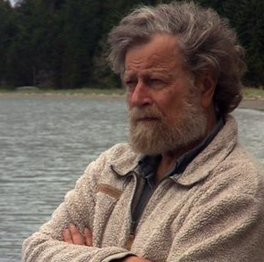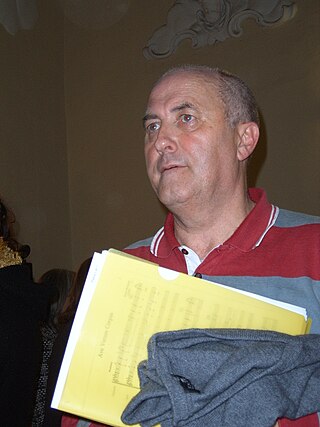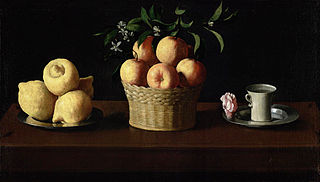O magnum mysterium is a responsorial chant from the Matins of Christmas.
O magnum mysterium may also refer to:
O magnum mysterium is a responsorial chant from the Matins of Christmas.
O magnum mysterium may also refer to:

Thomas William Selleck is an American actor. His breakout role was playing private investigator Thomas Magnum in the television series Magnum, P.I. (1980–1988), for which he received five Emmy Award nominations for Outstanding Lead Actor in a Drama Series, winning in 1985. Since 2010, Selleck has co-starred as New York City Police Commissioner Frank Reagan in the series Blue Bloods. Beginning in 2005, he has portrayed troubled small-town police chief Jesse Stone in nine television films based on the Robert B. Parker novels.
Cirencester Grammar School (CGS) was a grammar school in Cirencester, Gloucestershire, England, founded in about 1461 and closed in 1966.

Morten Johannes Lauridsen is an American composer. A National Medal of Arts recipient (2007), he was composer-in-residence of the Los Angeles Master Chorale from 1994 to 2001, and is the Distinguished Professor Emeritus of Composition at the University of Southern California Thornton School of Music, where he taught for 52 years until his retirement in 2019.
Magnum is a Latin word meaning "great".

O magnum mysterium is a responsorial chant from the Matins of Christmas.
The Memorial Acclamation is an acclamation sung or recited by the people after the institution narrative of the Eucharist. They were common in ancient eastern liturgies and have more recently been introduced into Roman Catholic, Anglican, Lutheran, and Methodist liturgies.
Sven Fredrik Johannes Sixten is a Swedish composer, cathedral organist and conductor. Sixten was born in Skövde, Sweden. He earned his Bachelor of Arts (1986) at the Royal College of Music, Stockholm. He studied composition with Professor Sven-David Sandström and is now recognized as one of Sweden's best-known composers of church music. He is published at all major publishing houses in Sweden.
Numinous is a term derived from the Latin numen, meaning "arousing spiritual or religious emotion; mysterious or awe-inspiring." The term was given its present sense by the German theologian and philosopher Rudolf Otto in his influential 1917 German book The Idea of the Holy. He also used the phrase mysterium tremendum as another description for the phenomenon. Otto's concept of the numinous influenced thinkers including Carl Jung, Mircea Eliade, and C. S. Lewis. It has been applied to theology, psychology, religious studies, literary analysis, and descriptions of psychedelic experiences.
Mysterium fidei may refer to:
Pedro de Cristo was a Portuguese composer of Renaissance music. He is one of the most important Portuguese polyphonists of the 16th and 17th centuries.

Chorus Paulinus is the album of the Chorus Paulinus recorded at the Performing Arts Center, San Luis Obispo, California, United States.

Javier Busto Sagrado is a Spanish choral music composer and conductor.
Mysterium Magnum is Latin for "great mystery" and has several different associations and usages.
Mysterium may refer to:
Polyphony is a small English choir formed by Stephen Layton for one particular concert put on in King's College, Cambridge in 1986. They have released many critically acclaimed recordings, the most recent of which is Esenvalds - Passion & Resurrection. They record and perform a wide range of music mainly on Hyperion Records. Every year they perform Handel's Messiah and Bach's St John Passion in St John's Smith Square to sell-out audiences. Many of their recordings have been Gramophone editor's choice.
Jeff Cannata is an American, Connecticut-based musician, songwriter, and record producer. Cannata was a founding member and driving force behind the New Haven-based, progressive rock band Jasper Wrath. He was the drummer for the group, however he also sang, played woodwinds, and wrote a majority of the songs on their 1971 self-titled debut album. The band retained a local following and continued touring until they disbanded in 1976.

Still Life with Lemons, Oranges and a Rose is an oil-on-canvas painting by Baroque Spanish artist Francisco de Zurbarán completed in 1633. It is currently displayed at the Norton Simon Museum in Pasadena, California as part of its permanent collection. It is the only still life signed and dated by him and is considered a masterwork of the genre.
Huw Spratling is a British composer. Spratling has collaborated on compositions with Sir Charles Groves and others.
O magnum mysterium (1569) is a six-part motet by Giovanni Pierluigi da Palestrina, based on the responsorial chant of the same name, and was written for the celebration of Christmas. The piece is intended to express the joy and awe that was felt by the shepherds as they celebrated and worshiped the Christ-child in the manger on Christmas Eve. Palestrina took the text for this piece from the first half of the third and fourth Responsories of Matins on Christmas Day. The text has been set many times by numerous composers, such as Palestrina, Poulenc, Lauridsen, and Morales.

O magnum mysterium is a motet for choir a cappella by Morten Lauridsen. He set the text of "O magnum mysterium", a Gregorian chant for Christmas, in 1994. The composition, performed and recorded often, made Lauridsen famous. It was described as expressive ethereal sounds in imperturbable calmness.